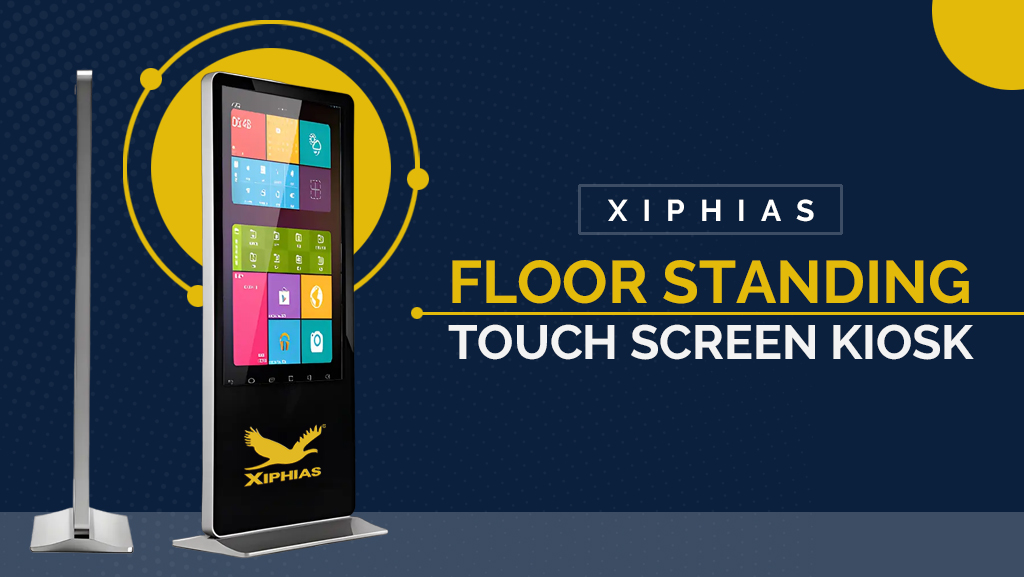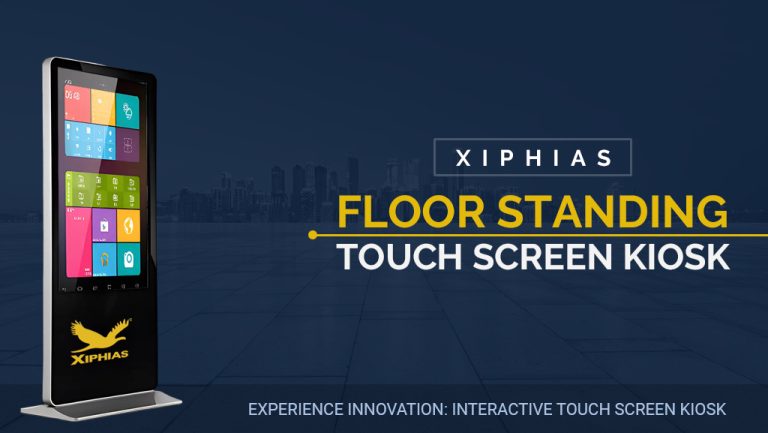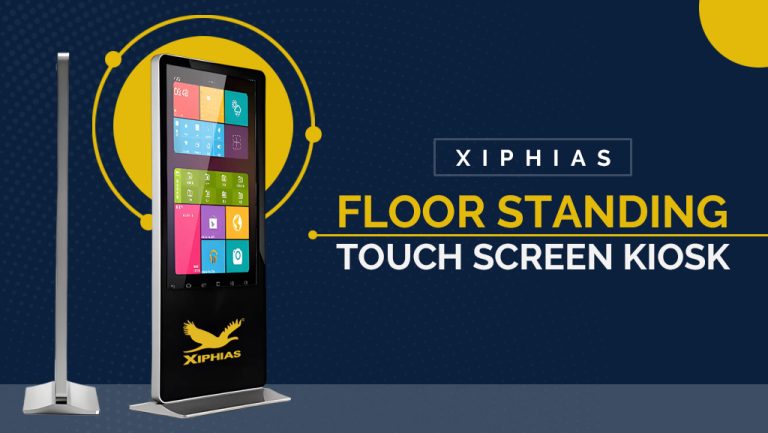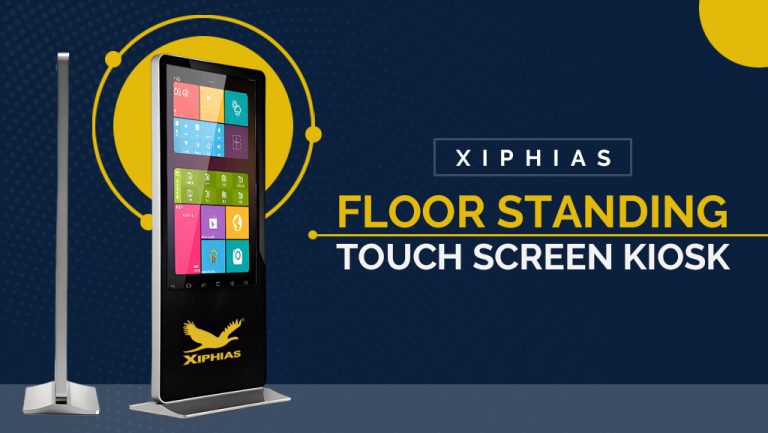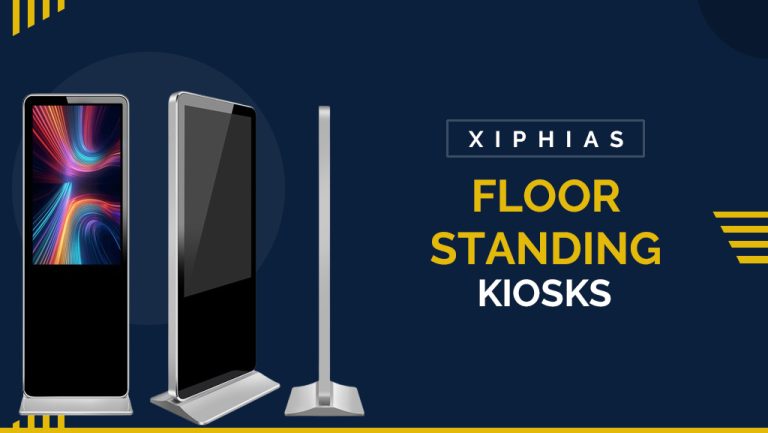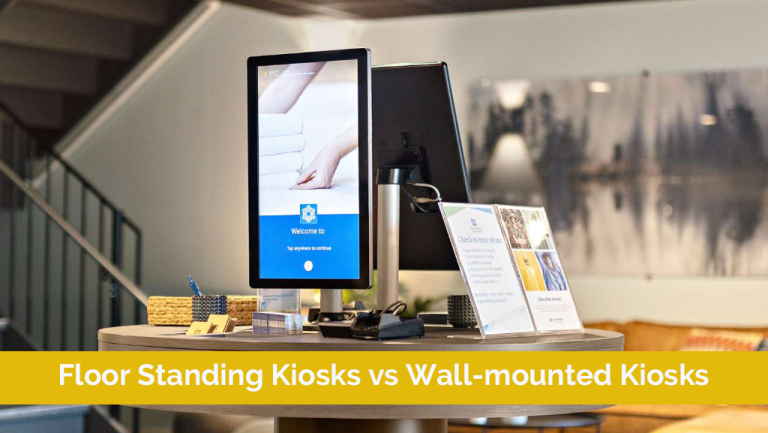How Floor Standing Interactive Kiosks Revolutionize Digital Interaction?
In today’s fast-paced, technology-driven world, businesses and organizations are constantly seeking innovative ways to enhance customer engagement, streamline operations, and improve user experience. One such innovation that has made a significant impact across various industries is the floor standing interactive kiosk. These kiosks are changing the way users interact with digital content, offering a seamless and immersive experience that is transforming everything from retail environments to healthcare facilities. In this blog, we will explore how floor standing interactive kiosks are revolutionizing digital interaction, their key features, and the benefits they offer.
What Are Floor Standing Interactive Kiosks?
Floor standing interactive kiosks are digital touch-screen systems mounted on a stand or pedestal. They allow users to interact with digital content through a user-friendly interface. These kiosks come in various sizes and configurations, making them adaptable for different business needs. Typically equipped with high-resolution displays, interactive software, and internet connectivity, they are used for a wide range of applications such as wayfinding, product browsing, self-check-in, and informational displays.
Revolutionizing Digital Interaction
The rise of floor standing interactive kiosks is changing the landscape of how people interact with technology. Here are several ways these kiosks are transforming digital interaction across industries:
1. Enhanced Customer Engagement
One of the primary benefits of floor standing interactive kiosks is their ability to enhance customer engagement. The interactive nature of the kiosk allows users to control their experience, offering a level of personalization that traditional static displays cannot provide. For example, in retail, customers can browse through product catalogs, check prices, and explore product features at their own pace. The interactive touch screen captures user attention, making the experience more engaging and immersive.
2. Streamlined Self-Service Solutions
Floor standing interactive kiosks have revolutionized the concept of self-service. From self-check-in kiosks in healthcare facilities to self-ordering kiosks in restaurants, these digital systems allow users to perform tasks on their own, without the need for assistance from staff. This not only improves efficiency but also enhances the customer experience by reducing wait times and minimizing human errors. In retail settings, self-service kiosks enable customers to make purchases, find product information, and even process returns, all with a few taps on the screen.
3. Real-Time Information Access
Floor standing interactive kiosks provide users with real-time access to information. In environments such as airports, hospitals, and shopping malls, these kiosks are often used as wayfinding solutions, helping users navigate complex spaces with ease. The integration of GPS technology and digital maps allows users to input their destination and receive step-by-step directions. Additionally, in industries like hospitality, kiosks provide guests with real-time updates on services, promotions, and events, making it easier to stay informed.
4. Seamless Integration with Digital Signage
Many floor standing interactive kiosks also double as digital signage displays, offering a two-in-one solution for businesses. When not in use, the kiosk can display promotional content, advertisements, or important information in a visually appealing format. This feature allows businesses to maximize the utility of their kiosks, ensuring they serve multiple purposes within a single device. The dynamic nature of digital signage on kiosks also enables real-time updates, keeping the content fresh and relevant.
5. Improved Data Collection and Analytics
Interactive kiosks are powerful tools for collecting user data and gaining valuable insights into customer behavior. Through touch screen interactions, businesses can track which services or products users are interested in, how long they spend on each interaction, and what information they access most frequently. This data can then be analyzed to improve marketing strategies, optimize product offerings, and enhance overall customer experience. The use of interactive kiosks for data collection is particularly beneficial in retail environments, where understanding consumer preferences is key to driving sales.
Key Features of Floor Standing Interactive Kiosks
To fully understand how floor standing interactive kiosks revolutionize digital interaction, it’s important to highlight their key features:
High-Resolution Touch Screens:
The most critical component of any interactive kiosk is the touch screen display. High-resolution, multi-touch screens provide a smooth and responsive user experience, making it easy for users to interact with digital content.
Customizable Software:
Interactive kiosks can be equipped with software tailored to specific business needs. Whether it’s a product catalog, wayfinding system, or booking platform, the software can be customized to enhance user interaction.
Internet Connectivity:
Most modern kiosks are equipped with internet access, allowing real-time updates and integration with cloud-based systems. This ensures that the kiosk’s content is always up-to-date and relevant to users.
Robust Security:
Interactive kiosks are built with security in mind. They often feature user authentication mechanisms, secure payment gateways, and protection against data breaches. This is especially important for kiosks used in financial services, healthcare, and government sectors.
Durability and Flexibility:
Floor standing kiosks are designed to withstand heavy usage in public spaces. They are built with durable materials and can be installed in various locations, from retail stores and airports to hospitals and libraries.
Industries That Benefit from Floor Standing Interactive Kiosks
The versatility of floor standing interactive kiosks makes them useful in a wide range of industries. Let’s look at some of the key sectors where these kiosks are making a difference:
1. Retail
In retail, interactive kiosks allow customers to browse products, check stock availability, and place orders. These kiosks can also serve as a point of sale (POS) system, reducing the need for cashier lines and speeding up the purchase process.
2. Healthcare
Hospitals and clinics are increasingly using self-service kiosks for patient check-in, appointment scheduling, and bill payments. These kiosks reduce administrative workloads and improve patient flow, creating a more efficient healthcare environment.
3. Hospitality
In hotels and resorts, floor standing interactive kiosks provide guests with access to information on services, local attractions, and event bookings. They also allow for self-check-in and room key distribution, enhancing the guest experience.
4. Transportation
Interactive kiosks in airports and train stations offer self-service ticketing, check-in, and real-time travel information. Passengers can quickly access flight schedules, directions to gates, and weather updates through these kiosks.
5. Education
Educational institutions are utilizing interactive kiosks for student registration, campus navigation, and access to academic resources. These kiosks provide a self-service solution for students and visitors, improving the overall campus experience.
The Future of Digital Interaction with Floor Standing Interactive Kiosks
As technology continues to evolve, floor standing interactive kiosks will become even more sophisticated, offering enhanced capabilities such as artificial intelligence, facial recognition, and voice-activated controls. These advancements will further revolutionize how users interact with digital content, making the experience more intuitive and accessible.
Additionally, as businesses increasingly adopt contactless technologies, interactive kiosks will play a vital role in ensuring safe and seamless interactions in public spaces. The demand for touchless payment systems, QR code scanning, and mobile integrations will drive the next wave of innovation in kiosk technology.
Conclusion
Floor standing interactive kiosks have transformed the way users engage with digital content, offering a more immersive, efficient, and personalized experience. Their applications in retail, healthcare, hospitality, and other industries demonstrate their versatility and impact on digital interaction. As technology advances, these kiosks will continue to evolve, providing even more dynamic solutions for businesses and consumers alike.
By incorporating interactive kiosks into your business strategy, you can enhance customer engagement, streamline operations, and stay ahead in today’s competitive digital landscape.

